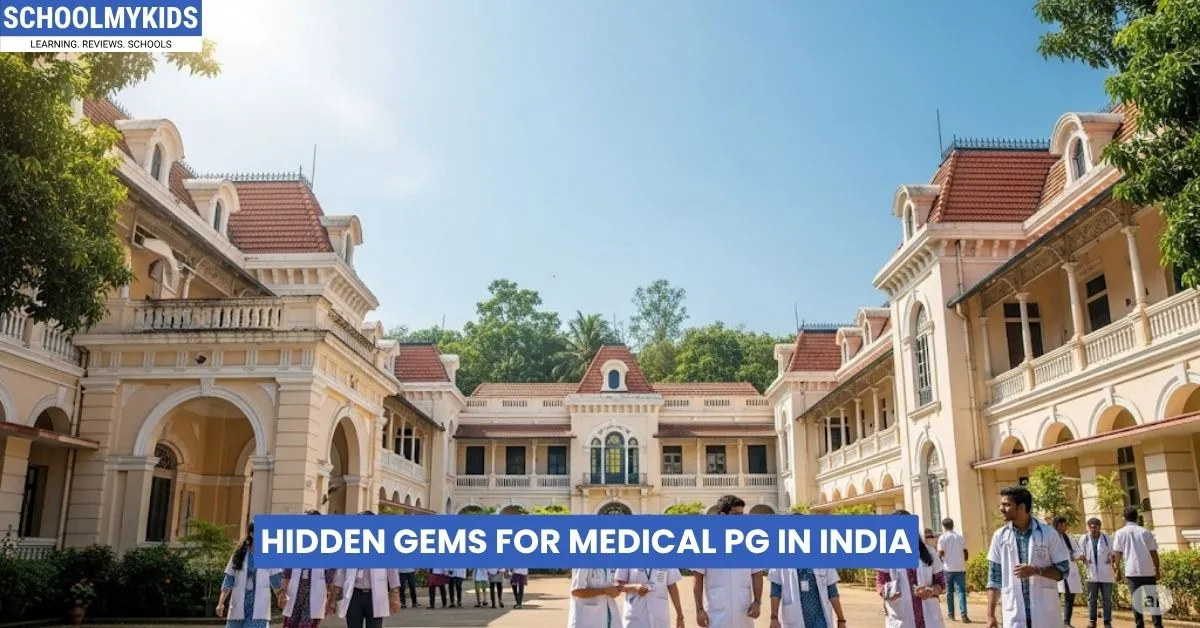The pursuit of a postgraduate medical seat in India is an arduous journey. Every year, lakhs of doctors vie for a limited number of seats in coveted branches at apex institutions like AIIMS Delhi, PGI Chandigarh, and KEM Mumbai. While the prestige of these top-tier colleges is undeniable, focusing solely on them can mean overlooking a wealth of other institutions that offer exceptional training.
A "hidden gem" for postgraduate studies is not about a fancy campus or a metropolitan location. It’s defined by factors that truly forge a skilled specialist: immense clinical volume, significant hands-on opportunities, strong departmental academics, and a diverse patient load. For the discerning PG aspirant, these lesser-known colleges can provide a learning experience that is just as robust, if not more practical, than their more celebrated counterparts. Here are five such institutions that deserve a closer look.
1. Sher-i-Kashmir Institute of Medical Sciences (SKIMS), Srinagar
A Unique Clinical Spectrum
As an autonomous institute and a deemed university, SKIMS is the primary tertiary care referral centre for the entire Kashmir valley and parts of the Jammu and Ladakh regions. Its unique geographical location makes it a fascinating place for postgraduate training.
Why It's a Gem
A PG student at SKIMS is exposed to a spectrum of clinical cases not commonly seen elsewhere in India. This includes conditions related to high-altitude physiology, distinct trauma patterns, and specific infectious diseases prevalent in the region. The institute has a heavy patient load and well-established departments, particularly in fields like Cardiology, Gastroenterology, and General Surgery. While often overlooked due to its location, SKIMS offers a rigorous academic environment and unparalleled experience in managing unique and complex medical challenges, all with a decent stipend.
2. Indira Gandhi Institute of Medical Sciences (IGIMS), Patna
The Clinical Powerhouse of the East
Functioning as an autonomous super-specialty institute on the lines of AIIMS, IGIMS serves the massive and densely populated state of Bihar and neighbouring regions. This translates into a staggering patient inflow, making it a crucible of clinical learning.
Why It's a Gem
The single greatest advantage of doing a PG at IGIMS is the sheer volume of patients. For hands-on branches like General Surgery, Orthopaedics, and Obstetrics & Gynaecology, the amount of practical work and surgical exposure is immense. A resident here learns to manage a high number of cases with limited resources, a skill invaluable for a career in India. The learning curve is incredibly steep, ensuring that doctors who train here emerge as highly competent and confident clinicians, well-versed in managing the ground realities of Indian healthcare.
3. Sir Ganga Ram Hospital (SGRH), New Delhi
The Gold Standard for DNB
While not a traditional university, Sir Ganga Ram Hospital is arguably the most sought-after private hospital in India for the Diplomate of National Board (DNB) programme. For many branches, its DNB is considered academically equivalent, and often clinically superior, to an MD/MS from many government colleges.
Why It's a Gem
SGRH combines the academic rigour of a teaching institution with the cutting-edge technology and infrastructure of a top corporate hospital. Residents are mentored by some of the most renowned consultants in the country and get exposure to the latest medical procedures and equipment. The hospital has a dedicated Department of Academics that ensures a structured teaching programme. A DNB from a high-volume, academically-oriented institution like SGRH is highly respected and offers an excellent alternative path to specialisation.
4. Jawaharlal Nehru Medical College (JNMC), AMU, Aligarh
The Overlooked Institute of National Importance
As a constituent college of Aligarh Muslim University, JNMC holds the coveted "Institute of National Importance" (INI) tag. This places it in an elite group, but it often flies under the radar compared to the Delhi-based INIs or even Banaras Hindu University.
Why It's a Gem
JNMC offers the perfect balance. It provides the benefits of a central institute—a well-structured curriculum, good infrastructure, and a fair stipend—without the hyper-competitive, high-pressure environment of the top metropolitan colleges. Its location in Western Uttar Pradesh ensures a steady and diverse patient flow, providing ample clinical material. The presence of a 50% internal quota for its own graduates also makes it a fantastic and strategic choice for its MBBS students aiming for a PG seat.
5. Government Medical College (GMC), Nagpur
The Clinical Workhorse of Central India
Established in 1947, GMC Nagpur is one of the oldest and largest government medical colleges in Central India. It is a classic example of an institution where the gloss of modern infrastructure is secondary to the sheer weight of clinical experience.
Why It's a Gem
The defining feature of a PG from GMC Nagpur is the raw, hands-on clinical and surgical skill a resident acquires. The attached hospital has an enormous patient load, and residents are at the forefront of patient care. This is a place where you learn by doing. While the work can be gruelling and resources stretched, the level of independence and the volume of procedures a PG gets to perform are immense. Doctors graduating from here are known to be incredibly resilient and clinically sound, ready for any challenge.
Conclusion: Think Like a Specialist
Choosing a postgraduate institute requires a different mindset than selecting an MBBS college. The name on the degree matters less than the skills acquired during the residency. The focus must be on the specific department's quality, the case variety, and the volume of hands-on work available. These hidden gems, and many others like them, offer fertile ground for doctors to transform into skilled specialists, proving that the best training isn't always found under the brightest lights.









Be the first one to comment on this story.